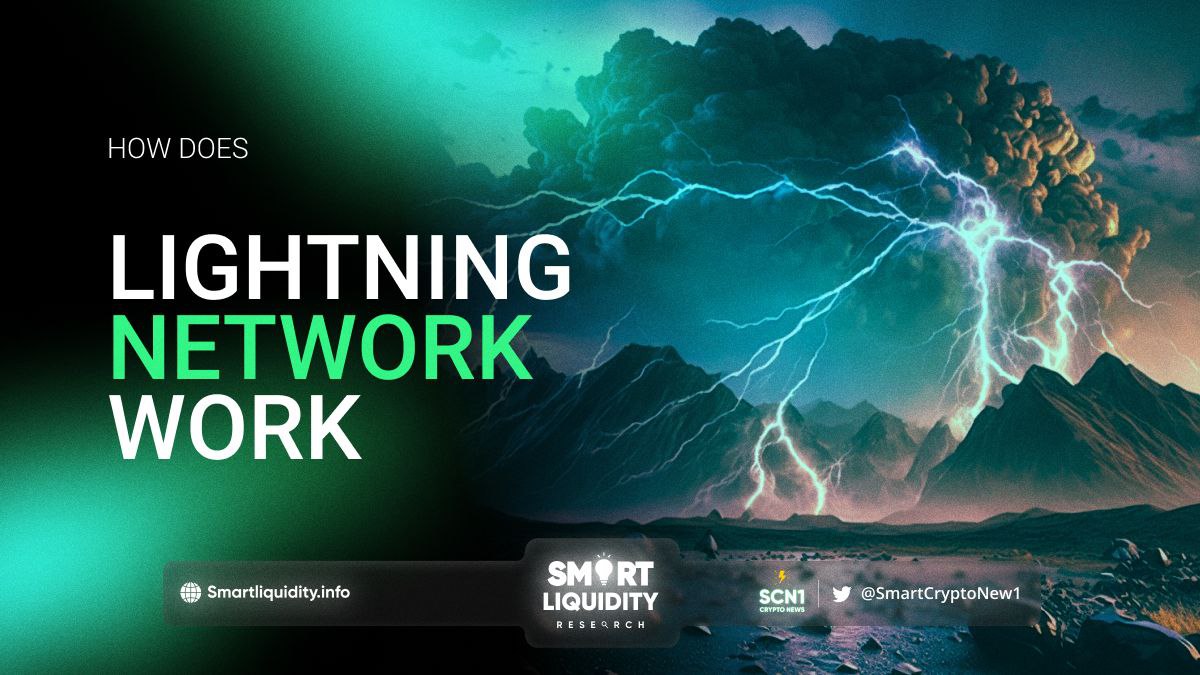What is Lightning Network?


What is Lightning Network? The Lightning Network according to Wikipedia is a layer-two scaling solution for blockchain-based cryptocurrencies such as Bitcoin, Litecoin, and others. It was designed to help overcome some of the scalability and transaction time limitations of these blockchain-based systems.
The Lightning Network operates by creating payment channels between parties that allow for near-instant and low-cost transactions without requiring every transaction to be recorded on the blockchain. This is achieved through the use of smart contracts. This allows parties to exchange funds between themselves without having to broadcast every transaction to the entire network.
Furthermore, Lightning Network aims to make micropayments and small transactions more feasible on blockchain-based systems. This is also increasing their overall transaction throughput. It has also been implemented by several cryptocurrency projects and is viewed as a potential solution to the scalability challenges faced by these systems.
What are the features of Lightning Network?
The Lightning Network offers several features that make it an attractive solution for scaling blockchain-based cryptocurrencies:
- Scalability
Allows for faster and more efficient transactions by reducing the number of transactions that need to be processed on the blockchain. - Low transaction fees
Because transactions are processed off-chain, the fees associated with Lightning Network transactions are typically much lower than those associated with on-chain transactions. - Instant transactions
Transactions on the Lightning Network are near-instant, allowing for a better user experience and making microtransactions more feasible. - Bidirectional payment channels
Payment channels on the network are bidirectional. This means that funds can be sent back and forth between parties without needing to create a new payment channel for each transaction. - Atomic swaps
This allows for atomic swaps, which are trustless and instant exchanges of one cryptocurrency for another. - Privacy
Transactions are private and do not reveal transaction details to the public blockchain, providing increased privacy for users.
Overall, the Lightning Network offers a range of features that make it an attractive solution for scaling blockchain-based systems. It also improves transaction speeds, reducing transaction costs, and increasing privacy.
How To Use Lightning Network?
Using the Lightning Network requires a few steps, and the specific steps may vary depending on the cryptocurrency wallet or exchange that you use.
Here’s a general overview of how to use the Lightning Network:
- Set up a Lightning Network-enabled wallet
To use the Lightning Network, you’ll need a wallet that supports it. Some popular options include Bitcoin Lightning Wallet, Zap, and BlueWallet. - Fund your wallet
Once you’ve set up your wallet, you’ll need to fund it with cryptocurrency. You can do this by sending cryptocurrency from your on-chain wallet or exchange account to your Lightning-enabled wallet. - Open a payment channel
To begin using the Lightning Network, you’ll need to open a payment channel with another Lightning user. This can be done by sending a payment channel request to another user’s Lightning wallet. - Make a Payment
Once you have a payment channel open, you can begin making payments to other Lightning users. To do this, you’ll need to generate an invoice from the recipient and then use your Lightning-enabled wallet to send the payment to their wallet. - Close the payment channel
When you’re done using the payment channel, you’ll need to close it to ensure that the funds are returned to your on-chain wallet. This can be done by sending a closing transaction to the blockchain.
It’s worth noting that the Lightning Network is still in the early stages of development, and it may not yet be widely supported by all cryptocurrency wallets and exchanges. However, as adoption increases, it’s expected that more users will begin to use the Lightning Network to take advantage of its benefits.




